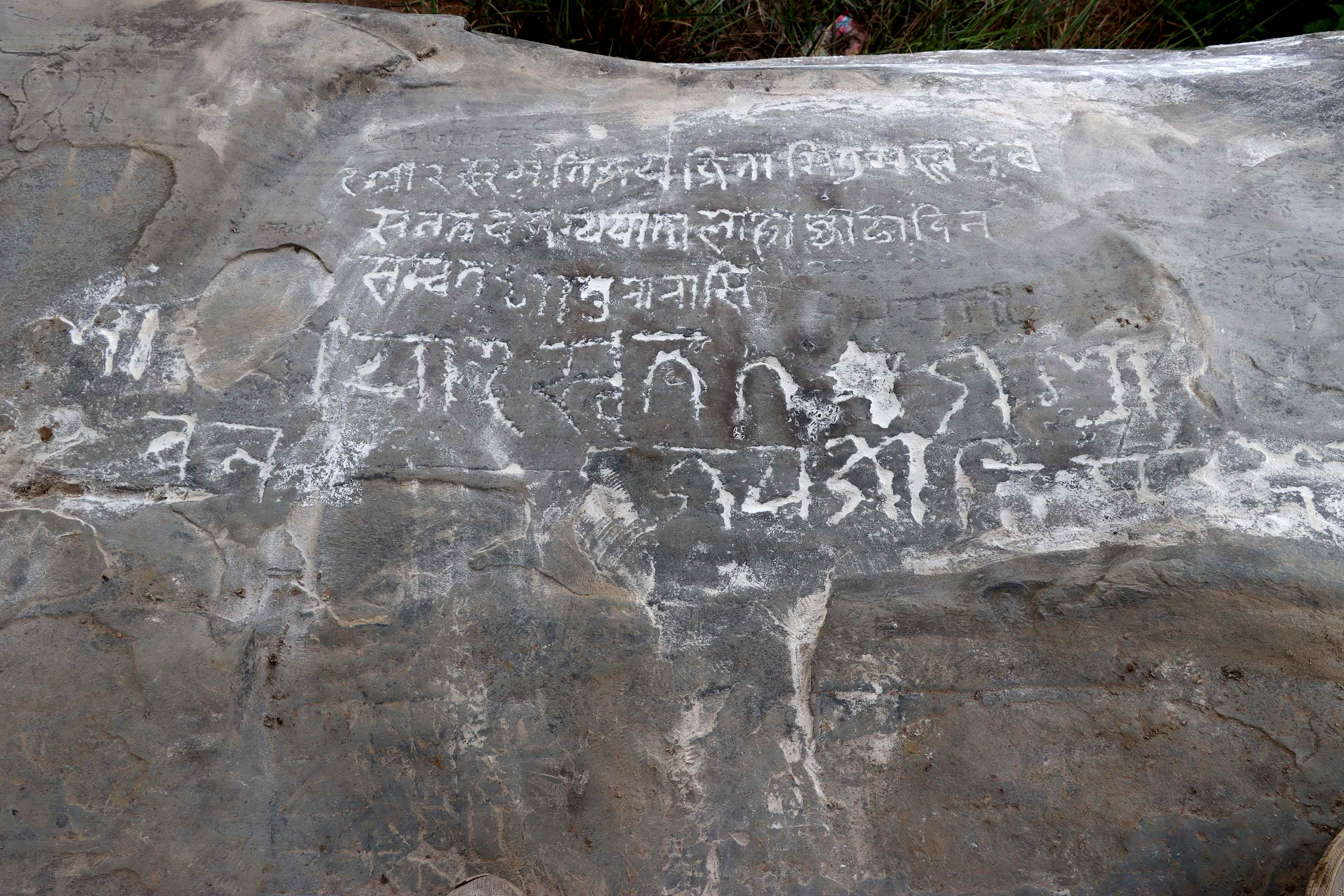Viśvakarmāgāũ Caṭṭāna Abhilekha at Nālāchāpa, Bhaktapur
Curated by Rajan Khatiwoda

This specific rock (DANAM ID: NWK0650), bearing six separate inscriptions containing royal directives, highlights the crucial role of stone procurement from the Nālāchāpa site during the medieval period for the crafting of stone artifacts and objects of worship, yet it suffers from poor preservation. Four natural rock formations in Nālāchāpa, a village northeast of Bhaktapur, contain inscriptions referencing Malla kings, including Jagajyoti Malla, Jitāmitra Malla, and Bhupatīndra Malla. These inscriptions confirm that superior quality stone from this site was chosen for artistic projects, with the earliest dating back to 1625 CE, recording the work of stone carvers. Additionally, two inscriptions from 640 and 641 CE, during the Licchavi period, mention stone transportation for sculpting statues, including the famous Buḍhānīlakaṇṭha statue. During the medieval period, Koṭakhā stone was renowned for its exceptional quality, with artistic creations often boasting its use. Several inscriptions link Koṭakhā stone to Bhaktapur’s monumental structures, and there is speculation that the stone used for the Buḍhānīlakaṇṭha statue and Koṭakhā stone came from the same quarry. Though slightly less refined than Koṭakhā stone, Nālāchāpa's rock formations were extensively used in Bhaktapur’s stonework, as confirmed by inscriptions detailing royal projects such as the construction of the Vatsalā temple. These findings emphasize the site's importance in Bhaktapur’s artistic heritage. For further details, readers are invited to explore the database.
